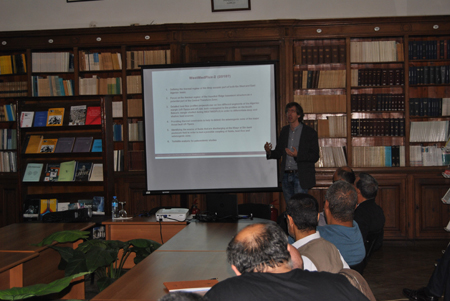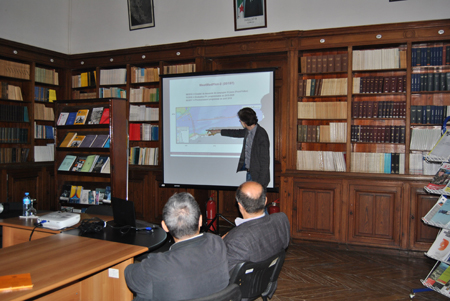|

Le Docteur Jeffrey Poort a présenté un
séminaire intitulé " Heat flow anomaliesin the Western
Mediterranean and the role of fluids, salt diapirs and
crustal nature: first results from the WesteMedFlux-2016
cruise"
à la bibliothèque du CRAAG le Mercredi 24 Mai 2017 à 10h30.


Résumé:
While there is now a
large consensus that Western Mediterranean basins developed
in a Miocene back-arc setting due to slab roll-back and that
some of its domains are floored by oceanic crust, there is
still a lot of speculation on the configuration, nature and
evolution of its margins and the ocean-continent transitions
(OCT).
A thick Messinian
layer of evaporites in the deep basin obscures deep seismic
reflectors, and only recently seismic refraction and
wide-angle studies revealed a confident picture of basement
configuration. In order to further constrain models of
crustal structure and margin evolution, heat flow is one of
the key parameters needed. Recent heat flow studies on other
margins have shown the existence of a persistent thermal
anomaly under rifted margins that urges to reconsider the
classical models of its evolution.
The young age of OCT
and ceased oceanic formation in the Western Mediterranean
make it an interesting test case for a thermo-mechanical
study of its margins.
The presence of
halokinetic structuring and salt diapirs urges the need of
close spaced heat flow measurement to evaluate heat
refraction and advective heat transfer by fluid migration.
During the WestMedFlux
cruise on the research vessel L’Atalante, we collected a
total of 150 new heat flow measurement (123 in pogo mode, 27
with a sediment corer) in the deep basin of the Western
Mediterranean where heat flow data were sparse.
Preliminary analysis
of the heat flow data confirms two regional trends: in the
southern Provencal basin an overall increase from west to
east (from about 60 mW/m2 at the Golf of Lion towards 75 mW/m2
at the West-Sardinia margin), while in the northern part of
the Algero-Balearic basin heat flow increases from east to
west (from about 80 to 100 mW/m2 ).
On this regional
trends, several local anomalies are clearly differentiated.
In the deep oceanic basin, strong anomalies seem to be
merely associated to salt diapiric structures.
On the OCT and on the
rifted continent, both strongly reduced and elevated heat
flow are observed and suggest other heat sink and sources.
We will discuss on the different processes that might have
affected the surface heat flow (e.g., bottom water currents,
slope instabilities and focused fluid migrations) and try to
link the large scale heat flow patterns with crustal nature,
structuring of the margins and mantle dynamics.
|